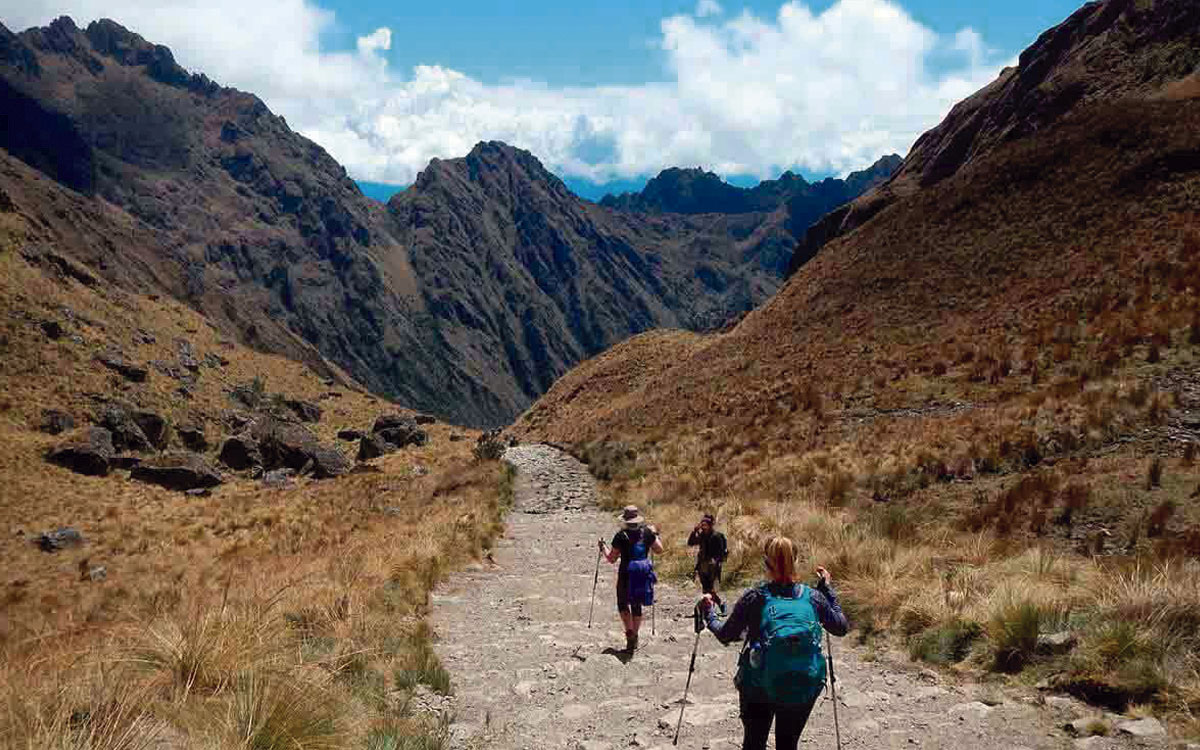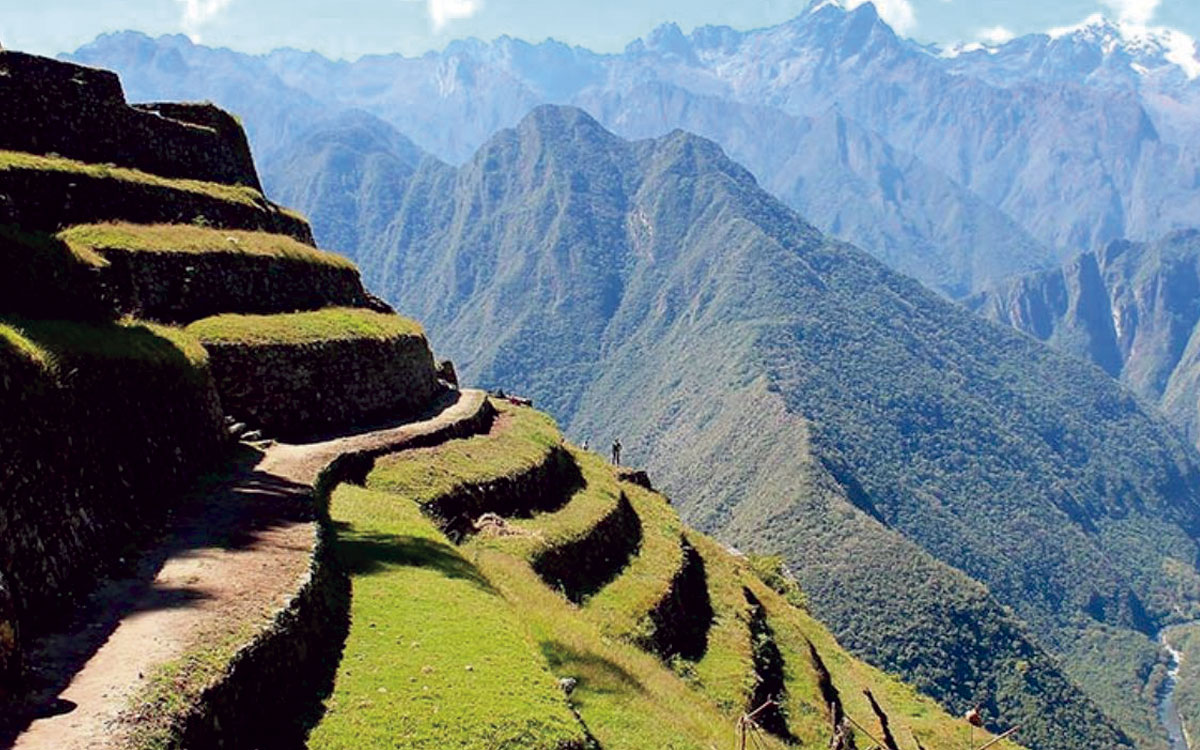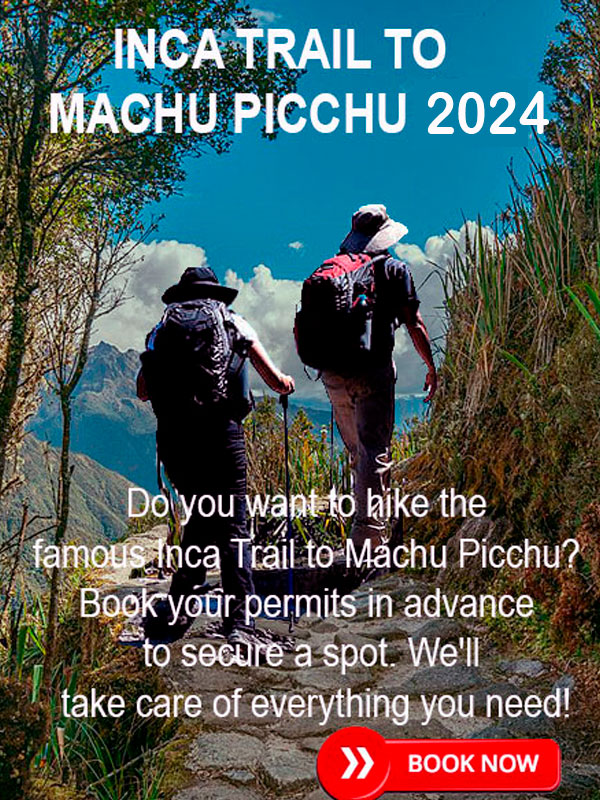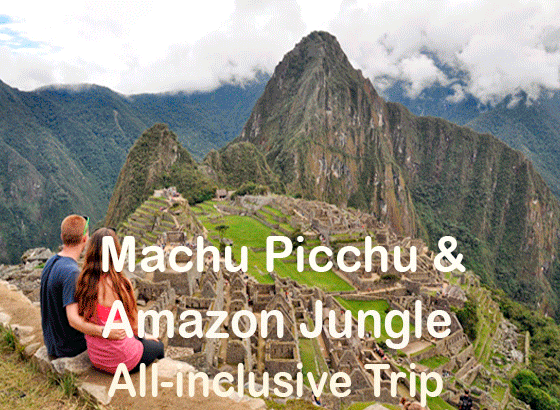What is the best time of year to walk the Inca Trail?
 If you’re planning to hike the legendary Inca Trail to Machu Picchu, timing your journey can be crucial to a successful and enjoyable experience. Factors such as weather conditions, trail availability, and personal preferences can all contribute to the decision of when to embark on this once-in-a-lifetime adventure. In this article, we will explore the different times of the year to walk the Inca Trail and provide valuable tips to help you plan your trip.
If you’re planning to hike the legendary Inca Trail to Machu Picchu, timing your journey can be crucial to a successful and enjoyable experience. Factors such as weather conditions, trail availability, and personal preferences can all contribute to the decision of when to embark on this once-in-a-lifetime adventure. In this article, we will explore the different times of the year to walk the Inca Trail and provide valuable tips to help you plan your trip.
Key Takeaways:
- The best time to hike the Inca Trail is during the dry season, which runs from May to September.
- During the wet season (November to March), trails can be muddy and slippery, and visibility can be limited.
- The high altitude of the trail can cause altitude sickness, so it’s essential to acclimatize before starting the hike.
- Obtaining permits in advance is crucial, as the number of daily hikers is limited.
- Packing essentials such as a sturdy backpack, comfortable shoes, and warm clothing is crucial for a successful trek.
Book The 4-Day Inca Trail to Machu Picchu.
Understanding the Inca Trail Seasons
When planning a trek along the Inca Trail, it’s essential to understand the various seasons and how they can impact your hiking experience. The trail is closed annually in February for maintenance, leaving seven months per year open for hiking.
The high season lasts from June to August, with the weather being typically dry, clear, and sunny. These months attract the most visitors, which means you’ll likely encounter more crowds and competition for permits and campsites. The temperature can drop significantly at night, so be prepared to pack warm clothes.
The shoulder season runs from April to May and September to October. During these months, you can expect more moderate temperatures and fewer crowds than the high season. However, there is a higher chance of rain, so it’s crucial to bring appropriate rain gear for any sudden downpours.
The low season lasts from November to March, and you can expect significant rainfall during this period. Many of the campsites can become muddy, making the hike more strenuous. However, if you’re prepared to deal with the rain and temperature variations, you’ll be rewarded with lush greenery and gorgeous scenery with far fewer crowds on the trail.
| Season | Duration | Weather Conditions | Pros | Cons |
| High Season | June-August | Dry, clear, sunny | Fewer rainy days, moderate temperatures | Large crowds, high competition for permits and campsites, cold nights |
| Shoulder Season | April-May, September-October | Moderate temperatures, possibility of rain | Fewer crowds than high season | Higher chance of rain, temperature variations |
| Low Season | November-March | Significant rainfall | Lush greenery, far fewer tourists | Muddy trails, high temperature and weather variations, limited services |
By understanding the seasons along the trail, you can make an informed decision on when to embark on your journey. Regardless of the season you choose, be sure to prepare for the weather conditions and pack appropriate gear, so you can enjoy a safe and unforgettable Inca Trail adventure.

Trekking Tips for the Inca Trail
Trekking the Inca Trail can be an incredible experience, but it’s crucial to prepare adequately to ensure a safe and enjoyable hike. Here are some tips to help you make the most of your journey:
Prepare for the Altitude
The Inca Trail reaches elevations as high as 4,200 meters (13,780 feet), so it’s essential to spend a few days in Cusco or the surrounding area to acclimatize to the altitude. Also, drink plenty of water, avoid alcohol and caffeine, and consider taking altitude sickness medication if recommended by your doctor.
Obtain Necessary Permits
Due to its popularity, Inca Trail permits are limited to 500 per day, including all hikers, guides, and porters. Permits often sell out months in advance, so be sure to plan your trip accordingly to secure your permit.
Pack the Right Gear
Bring comfortable, sturdy hiking boots, a backpack, and warm layers for chilly nights. Investing in a good-quality sleeping bag can also make a big difference. Check the weather forecast before your trip and pack accordingly.
Follow Leave No Trace Principles
Leave the trail as you found it by carrying out all trash and following Leave No Trace principles. Also, support local communities by hiring a reputable tour company that treats porters and guides fairly.
Following these tips will help you make the most of your hiking experience on the Inca Trail. Happy trekking!
Machu Picchu – The Ultimate Reward
After trekking the Inca Trail, Machu Picchu is the ultimate reward. This magnificent wonder of the world has been preserved since the time of the Incas, and visitors from around the globe flock to see it in person.
The journey to Machu Picchu can be challenging, and the Inca Trail difficulty is not to be underestimated. However, the obstacles you encounter along the way only add to the overall adventure. The steep inclines, rocky terrain, and high altitude will test your endurance, but the stunning views and rich history you encounter make it all worthwhile.
As you approach Machu Picchu, you’ll be filled with a sense of awe and wonder. The intricate stonework, verdant surroundings, and breathtaking views will leave you speechless. The moment you set eyes on this incredible feat of engineering, you’ll know that every step of the trek was worth it.
Book Inca Trail to Machu Picchu
Essentials for Your Inca Trail Adventure
Embarking on the Inca Trail requires proper planning and packing. You don’t want to be caught without the essentials, as it could make your experience uncomfortable or even dangerous. Here’s a comprehensive packing list, including essential items and recommendations for a comfortable and successful trek:
| Item | Recommended Quantity |
| Hiking boots | 1 pair |
| Insect repellent | 2 bottles |
| Sunscreen | 2 bottles |
| Water bottle with filter | 1 |
| Backpack (at least 25L) | 1 |
| Waterproof jacket | 1 |
| Wool socks | 3 pairs |
| Warm hat | 1 |
| Gloves | 1 pair |
| Headlamp | 1 |
| Passport | 1 |
| First-aid kit | 1 |
| Snacks (energy bars, nuts, etc.) | 3-4 |
| Camera | 1 |
Additionally, we recommend bringing along a travel guidebook to help you navigate the logistics of reaching the trailhead and organizing your trip. A good guidebook can provide valuable information on local customs, recommended tours, and historical landmarks.
By packing smart and bringing along a comprehensive travel guide, you’ll be well-prepared for the Inca Trail adventure of a lifetime.
The Best Inca Trail Treks to Machu Picchu
SHORT INCA TRAIL TO MACHU PICCHU 2 DAYS
SHORT INCA TRAIL TREK & RAINBOW MOUNTAIN 3-DAYS
INCA TRAIL TO MACHU PICCHU 4 DAYS
INCA TRAIL HIKE PRIVATE SERVICE 4 DAYS
HIKE INKA TRAIL TO MACHU PICCHU 4D/3N
INCA TRAIL EXPLORE & HUAYNAPICCHU 5 DAYS
CLASSIC INCA TRAIL & SACRED VALLEY TOUR 5 DAYS
INCA TRAIL TREKKING & SALKANTAY TREK 7 DAYS
BEST TREKKING TO MACHU PICCHU 7 DAYS

Conclusion
Planning a trek along the Inca Trail is an exciting and rewarding experience. By considering the best time to hike the trail, understanding the different seasons, and following our trekking tips, you can make your journey to Machu Picchu a success.
Remember to pack wisely, taking into account the essential items needed for a comfortable hike. And, of course, don’t forget to obtain the necessary permits and make travel arrangements ahead of time.
Embarking on an adventure to Machu Picchu via the legendary Inca Trail is an unforgettable experience. The breathtaking scenery and historical significance of the trail make it a must-do for any avid hiker or history buff.
We hope you found our article informative and enjoyable. Happy hiking!
FAQ
What is the best time of year to walk the Inca Trail?
The best time to hike the Inca Trail is during the dry season, which runs from May to September. During these months, you can expect clear skies and minimal rainfall, providing ideal weather conditions for trekking. However, it’s worth noting that this is also the peak tourist season, so the trail may be more crowded. If you prefer fewer crowds, consider hiking during the shoulder months of April and October.
What are the different seasons on the Inca Trail and how do they impact hiking?
The Inca Trail has two distinct seasons: the dry season and the wet season. The dry season, from May to September, offers the most favorable weather conditions for trekking, with lower chances of rainfall and comfortable temperatures. On the other hand, the wet season, from October to April, experiences frequent rain showers, making the trail more challenging and potentially muddy. However, hiking during the wet season offers lush green landscapes and fewer crowds.
What are some trekking tips for the Inca Trail?
Here are some essential tips for a successful Inca Trail trek: 1. Prepare for the altitude: The Inca Trail reaches elevations of over 13,000 feet, so acclimatization is crucial. Spend a few days in Cusco or other high-altitude areas before starting the trek. 2. Obtain necessary permits: Due to conservation efforts, the Peruvian government limits the number of hikers on the trail each day. Make sure to secure your Inca Trail permit well in advance. 3. Pack properly: Carry essential items like comfortable hiking boots, lightweight clothing, a good-quality backpack, a hat, sunscreen, insect repellent, and a refillable water bottle. 4. Train and get fit: The Inca Trail involves several long and steep uphill and downhill sections. Regular exercise and endurance training before the trek will greatly enhance your experience. 5. Hire a reputable tour operator: To ensure a safe and organized journey, consider booking a guided tour with an experienced and licensed operator who provides knowledgeable guides and necessary equipment.
How difficult is the Inca Trail and what challenges can I expect?
The Inca Trail is considered moderately challenging. The steep ascents and descents, high altitude, and long distances make it physically demanding. It’s important to be reasonably fit and mentally prepared for the trek. Altitude sickness can also be a concern, so acclimatization is essential. Additionally, weather conditions can vary, with cold nights and hot days, so be prepared for fluctuating temperatures.
What should I pack for the Inca Trail?
Here’s a packing list for the Inca Trail: 1. Hiking boots 2. Comfortable socks 3. Lightweight and breathable clothing (including a waterproof jacket and pants) 4. Hat and sunglasses 5. Sunscreen and insect repellent 6. Refillable water bottle 7. Snacks and energy bars 8. First aid kit 9. Personal toiletries 10. Headlamp or flashlight 11. Trekking poles 12. Sleeping bag 13. Camera or smartphone for capturing the breathtaking views
How do I get to the trailhead and organize my trip?
Most Inca Trail treks start in the town of Ollantaytambo or Cusco in Peru. From there, you’ll need to arrange transportation to the trailhead at Kilometer 82. You can either book a tour that includes transportation or make your own way by bus or taxi. It’s advisable to plan your trip in advance, including obtaining Inca Trail permits, booking accommodations in Cusco or Aguas Calientes (the town near Machu Picchu), and coordinating with a reputable tour operator if desired. Researching and preparing beforehand will ensure a smooth and enjoyable trip.



